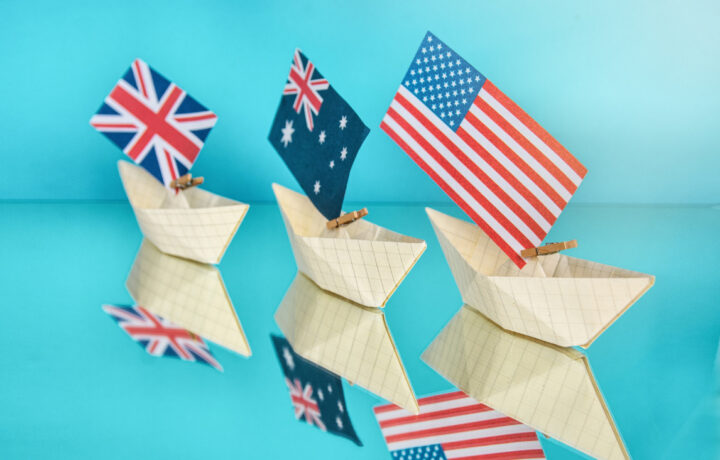The trilateral security partnership for the Indo-Pacific region known as AUKUS was officially announced in September 2021. The first pillar of the partnership called for the U.S. and the UK to assist Australia in acquiring nuclear-powered submarines.
AUKUS was further initiated to increase cooperation on advanced cyber mechanisms, artificial intelligence and autonomy, quantum technologies, undersea capabilities, hypersonic and counter-hypersonic, electronic warfare, innovation, and information sharing. Moreover, the partnership is noted for primarily focusing on military capability, which distinguishes it from the Five Eyes intelligence-sharing alliance that also includes Canada and New Zealand.
The second pillar of the AUKUS alliance will focus on other emerging defense technologies – and it could be extended to include Japan.
The Submarine Mission
Under the plan’s first pillar, Australia will purchase three Virginia-class conventionally armed, nuclear-powered submarines in time to replace its current fleet of diesel-electric subs in the 2030s. The three countries are also developing a future-generation submarine – the SSN-AUKUS – which will be fielded by the UK in the 2030s and the 2040s.
As National Defense magazine reported, the first phase of pillar one will involve “embedding Australian personnel across partner navies and increased port visits beginning in 2023 and the establishment of the Submarine Rotational Force-West — a rotational presence at HMAS Stirling in Western Australia of one U.K. and up to four U.S. nuclear-powered submarines, as early as 2027.”
The trilateral partnership comes as the United States faces nearly a three-year delay with the Virginia-class program, but supporters believe that AUKUS could help – not hinder – the U.S. submarine industrial base. In September 2024, the U.S. Navy announced a partnership with private industry to help expand the manufacturing base, which had shrunk to just one-third of its capacity 30 years ago. In addition, many skilled engineers and tradespeople have left the industry, and the base is struggling to replace those workers.
The submarine industrial base is also just one part of a much bigger problem. Fortunately, it isn’t being ignored by lawmakers. Last month, U.S. lawmakers introduced the bipartisan SHIPS for America Act, which was meant to reform the commercial maritime and shipbuilding sectors and allow the country to better compete with China.
Commonality of Submarines
AUKUS could expand the submarine industrial base even further said Admiral Bill Houston, director of naval reactors for the U.S. Navy, at the Naval Submarine League’s Annual Symposium and Industry Update last November.
“Those allies and partners, they are bringing capabilities to us,” Houston suggested. “They will help our industrial base.”
To accomplish this, SSN-AUKUS may be more of an evolutionary follow-up to the Virginia-class, rather than a truly revolutionary design.
“Driving commonality is good. As long as our industrial base across all three nations can support that, it will build resiliency,” added Houston.
Casting Call
One area where the U.S. could benefit significantly from AUKUS is in the casting, National Defense further explained, citing Rear Admiral Jonathan Rucker. “Large casting — used to produce parts for submarines by pouring molten metal into a mold to create solid metal pieces — is one area that has seen improvement,” the report noted.
The United States has just a sole company that can produce the casting, but two vendors can take on the work in the UK.
In addition, an Australian firm that is part of the country’s additive manufacturing consortium could aid in the production of future submarines.
Choppy Waters Remain
While the AUKUS partnership is meant to address issues with the industrial base in the three countries, it also paves the way for future bottlenecks warned critics of the program. Moreover, the United States isn’t focused just on the SSN AUKUS – as it must also remain committed to the Columbia-class nuclear-powered ballistic missile submarines (SSBNs) that will replace the aging Ohio-class, which are reaching (and in some cases nearly past) the end of their service lives.
This has left the submarine industrial base spread even thinner.
“We are not in low-rate production,” Houston warned. “We are in the highest rate of production we’ve been in as a nation with an industrial base that’s less than half the size [it was in the Cold War]. It’s an exceptionally fragile industrial base. It’s with an industrial base that is very, very challenged.”




